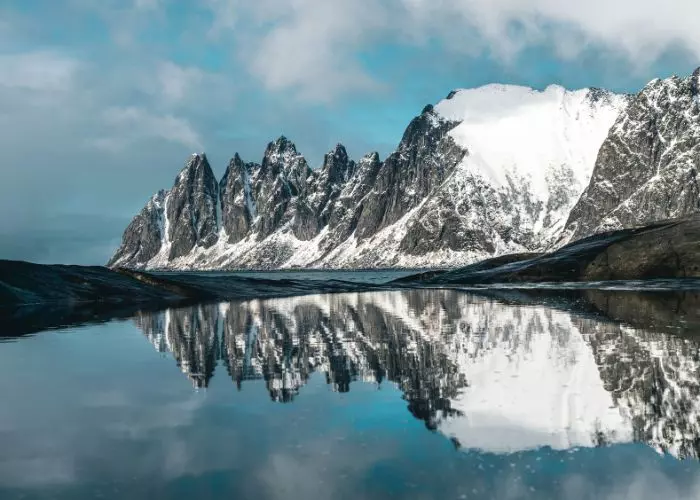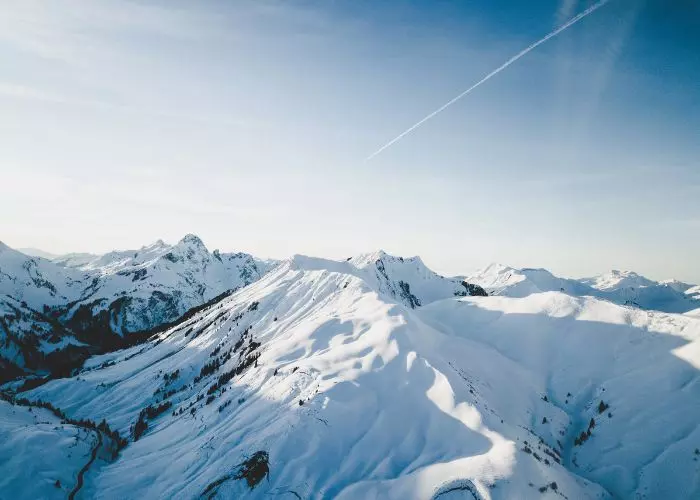Canada, a country renowned for its breathtaking landscapes, rich culture, and friendly people, experiences a diverse range of weather conditions throughout the year. One of the most iconic features of Canadian winters is its pristine snowfall, transforming the landscape into a winter wonderland.
As the world’s second-largest country by land area, Canada’s climate varies significantly from coast to coast, influencing when and where the snow arrives each year. In this article, we delve into the magic of Canadian snowfall and explore when and where you can experience the enchantment of a white winter. Learn When Does It Snow in Canada below in the article.

When Does It Snow in Canada: The Geography of Canadian Snowfall
Canada’s immense size and geographical diversity play a crucial role in determining when it snows in different regions. Canada offers a kaleidoscope of winter climates, from the snow-covered peaks of the Arctic and Subarctic regions to the milder winters of the Pacific Maritime coast.
The onset of snowfall can range from as early as September in the far north to November in eastern coastal areas. The duration of the winter season also varies, with some regions experiencing snow cover for several months, creating a winter wonderland that captivates both locals and visitors alike.

Arctic and Subarctic Regions
In Canada’s far north, the Arctic and Subarctic regions experience long and harsh winters, making them a true winter wonderland. As early as September, these areas are embraced by the first snowfall, and the glistening landscape remains blanketed in snow until late spring, often lingering until May or even June.
The temperatures in this frigid expanse plummet to bone-chilling lows, and the snow cover can reach several feet deep, creating a mesmerizing frozen scenery that seems almost otherworldly. This pristine and awe-inspiring environment attracts adventurers and nature enthusiasts seeking to experience the raw beauty of the great white north.
Pacific Maritime Region
On the west coast, the Pacific Maritime region basks in a milder winter climate thanks to the tempering influence of the nearby Pacific Ocean. Urban centers like Vancouver and Victoria experience wet winters with relatively limited snowfall, often giving way to more rain than snow.
However, as one ventures into higher elevations among the coastal mountains and areas further inland, the landscape transforms into a winter wonderland. These regions receive significant snowfall during the winter months, offering ample opportunities for winter sports enthusiasts to ski, snowboard, and immerse themselves in the beauty of snow-capped peaks.

Prairie Region and Atlantic Maritime Region
The Prairie provinces, Alberta, Saskatchewan, and Manitoba, are known for their cold and snowy winters. Snow typically arrives in late October or early November, and the region experiences consistent snow cover until March or April. Blizzards are not uncommon in these vast open plains, adding to the Canadian winter experience.
On the eastern coast, the Atlantic Maritime region, including cities like Toronto, Montreal, and Halifax, experiences a mix of winter conditions. Snow can begin falling as early as November and last until March or April. The proximity to the Atlantic Ocean can bring milder temperatures and more variable weather.

The Rocky Mountains and Snowfall
The Canadian Rockies, a mountain from British Columbia to Alberta, stand as a testament to nature’s grandeur. These majestic peaks not only offer breathtaking scenery but also act as a magnet for snowfall. Come winter, ski resorts nestled in picturesque locations like Banff, Whistler, and Jasper come alive with excitement.
Enthusiasts from around the globe flock to these winter wonderlands, enticed by the promise of some of the finest snow conditions in North America. From thrilling downhill runs to serene cross-country trails, the Canadian Rockies deliver an unparalleled winter experience that leaves a lasting impression on all who know them. We invite you to read another interesting article about How Many NHL Teams Are in Canada in our blog.
Frequently Asked Questions
What are the major climate regions in Canada, and how do they influence snowfall patterns?
Canada can be divided into five major climate regions: Arctic, Subarctic, Pacific Maritime, Prairie, and Atlantic Maritime. Each region experiences varying onset and duration of snowfall, with the Arctic and Subarctic regions having long and harsh winters, while the Pacific Maritime coast enjoys milder winters with limited snowfall.
When does snowfall typically begin in Canada’s far north?
As the first snowfall blankets the far north of Canada as early as September, a captivating winter wonderland emerges, enchanting the hearts of both locals and travelers. The mesmerizing landscape beckons adventurers to embrace the magic of the snowy season and create unforgettable memories in this snowy paradise.
Which Canadian region experiences unpredictable winters due to its proximity to the Atlantic Ocean?
In the Atlantic Maritime region, cities like Toronto, Montreal, and Halifax endure unpredictable winters shaped by the nearby Atlantic Ocean. Snowfall usually starts in November and continues until March or April, creating a winter experience filled with ever-changing weather and picturesque snow-covered landscapes.
What is the significance of the Canadian Rockies during the winter months?
The Canadian Rockies are not only known for their breathtaking scenery but also act as a snow magnet. Ski resorts in places like Banff, Whistler, and Jasper thrive during the winter season, attracting visitors worldwide to experience some of the best snow conditions in North America.
How does Canada’s west coast differ from other regions in terms of snowfall?
The west coast, particularly the Pacific Maritime region, enjoys a milder climate due to the influence of the Pacific Ocean. Cities like Vancouver and Victoria experience wet winters with relatively little snowfall, while higher elevations in the coastal mountains and areas further inland can receive significant snowfall.
Conclusión
When it snows in Canada depends on where you are in this country. From the snow-covered Arctic tundra to the rainy winters on the west coast, and the snowy prairies to the unpredictable winters along the Atlantic coast, Canada offers a myriad of winter experiences for locals and travelers alike.
Whether you are seeking thrilling winter sports, a serene snowy retreat, or a chance to witness the raw beauty of winter landscapes, Canada has all of it. Embrace the magic of winter and explore the enchanting world of Canadian snowfall.



















